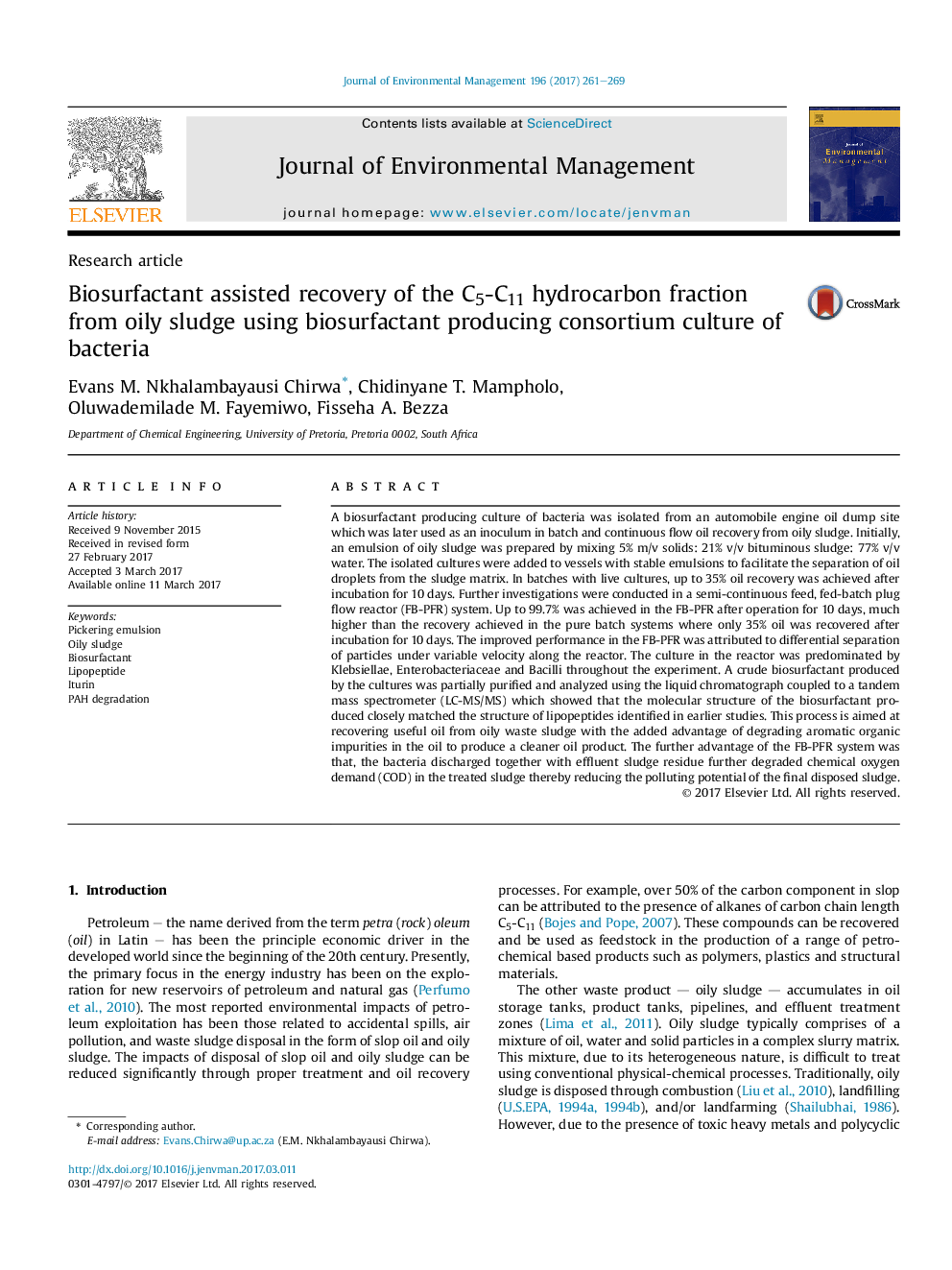| Article ID | Journal | Published Year | Pages | File Type |
|---|---|---|---|---|
| 5116669 | Journal of Environmental Management | 2017 | 9 Pages |
â¢Biosurfactant assisted oil recovery from oily sludge was achieved in batch systems.â¢Improved oil recovery was achieved in variable velocity fed-batch plug flow reactor.â¢Biosurfactant producing bacteria degraded aromatic compounds impurities in the oil.â¢Selective degradation of aromatic compounds produced a cleaner final oil product.â¢FTIR and LC-MS/MS analysis of purified biosurfactant showed a lipoprotein structure.
A biosurfactant producing culture of bacteria was isolated from an automobile engine oil dump site which was later used as an inoculum in batch and continuous flow oil recovery from oily sludge. Initially, an emulsion of oily sludge was prepared by mixing 5% m/v solids: 21% v/v bituminous sludge: 77% v/v water. The isolated cultures were added to vessels with stable emulsions to facilitate the separation of oil droplets from the sludge matrix. In batches with live cultures, up to 35% oil recovery was achieved after incubation for 10 days. Further investigations were conducted in a semi-continuous feed, fed-batch plug flow reactor (FB-PFR) system. Up to 99.7% was achieved in the FB-PFR after operation for 10 days, much higher than the recovery achieved in the pure batch systems where only 35% oil was recovered after incubation for 10 days. The improved performance in the FB-PFR was attributed to differential separation of particles under variable velocity along the reactor. The culture in the reactor was predominated by Klebsiellae, Enterobacteriaceae and Bacilli throughout the experiment. A crude biosurfactant produced by the cultures was partially purified and analyzed using the liquid chromatograph coupled to a tandem mass spectrometer (LC-MS/MS) which showed that the molecular structure of the biosurfactant produced closely matched the structure of lipopeptides identified in earlier studies. This process is aimed at recovering useful oil from oily waste sludge with the added advantage of degrading aromatic organic impurities in the oil to produce a cleaner oil product. The further advantage of the FB-PFR system was that, the bacteria discharged together with effluent sludge residue further degraded chemical oxygen demand (COD) in the treated sludge thereby reducing the polluting potential of the final disposed sludge.
Graphical abstractDownload high-res image (222KB)Download full-size image
